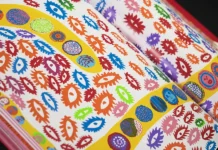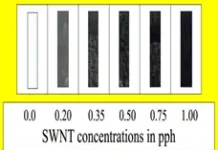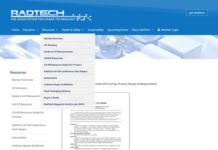by Pamela Lee, Excelitas Technologies Corporation
Introduction

Printing processes have drastically evolved over the years, originating in the form of labor-intensive manual printing presses and advancing to modern day offset, flexography, digital and 3D printers. While a number of different printing technologies are available, printing with UV inks is a fast growing sector, and UV LEDs are becoming the light source for curing UV inks in many printing applications.
Until recent years, UV LEDs have been faced with a number of technical and economic barriers that have prevented wide commercial adoption. High cost and limited availability of LEDs, low output and efficiency, and thermal management challenges, combined with ink compatibility were factors that prohibited market adoption. With advancements in UV LED technology, utilization of UV LEDs for curing in printing processes has become increasingly prominent in the market. There are several technological advances that have enabled the use of UV LEDs for ink curing, as well as specific advantages UV LEDs bring to printing processes.
Evolution of LEDs
While the adoption of LEDs into consumer devices and applications such as televisions, electronics, displays and lighting has been prolific, this uptake has been predominantly in the longer wavelength spectrum of visible light or infrared. Until recently, UV LEDs have experienced a more modest adoption because of a number of commercial and technological challenges. Some of these barriers included high cost, low output power and efficiency, as well as thermal management challenges. Significant progress has been made to address these shortfalls and, as such, has helped advance the acceptance and viability of UV LEDs as a curing solution. According to market research from Yole Développement, “the UV LED business is expected to grow from $45M in 2012 to nearly $270M by 2017,” with majority of this being accounted for by UV curing.
Cost
As with most new technologies, acquisition costs tend to be greatest in the early stages of product availability and decline as mass market adoption occurs. While the LED components themselves contribute most of the total system cost for UV-LED installations, the implementation and efficiency of designs also dictates how well the produced radiant energy is delivered to the working surface. For instance, the better the implementation of optics and cooling, the fewer LEDs will be required.
Despite much of LED development and adoption being focused on visible light, the growing market, increasing commercial use of LED and investment into the technology itself have helped to drastically improve the cost landscape for UV LEDs as well. Efficiency and yields have been on the rise while costs have come down – by more than a factor of 10 in the past decade. This all has contributed to wider adoption, increased volumes and increased support for UV LED compatible inks and materials available for the marketplace.
While the upfront capital investment in a UV LED curing system for printers may be higher than that for a conventional lamp-based solution, the gap in expenditure has narrowed significantly in the past few years, making the payback period much shorter. With growing demand and further advancements in process and technology, the overall cost of UV LEDs will continue to be on the decline.
Output power and efficiency
Arguably one of the areas under the most scrutiny for UV LED technology is the efficiency and maximum radiant power that is produced. Curing of inks requires concentrated energy to be delivered to the curable ink, and this can be achieved with LED systems by concentrating the radiant energy through optics and/or packaging. High power systems are created by grouping arrays of LED die together, increasing both the packing density and, in principle, the radiated power. However, in practice, there are limitations to the packaging as a higher packing density results in a greater power per area (an increased irradiance), but with that must also come the handling of an increased heat density and power consumption.

Irradiance is inversely proportional to the junction temperature of the LED die, thus maintaining a cooler die not only extends life and improves reliability, it also increases efficiency and output. Figure 2 illustrates the lifetime of LEDs at different junction temperatures and the relative output. A sharp decrease can be seen in LED performance with higher junction temperatures. Thermal management has become a crucial technological component in UV LED advancements and will be further discussed in this article.
The components of LED arrays, thermal management and optics all work together, as optimizing one piece often impacts the others. The effective use of optics, for example, will allow light to be projected more efficiently, thus reducing thermal load, increasing irradiance at longer working distances, reducing the number of LEDs required and, as a consequence, lowering cost. A good implementation of UV LED systems requires expertise in each area and an understanding that each piece is interwoven to work as a system.
The challenges of packaging UV LEDs into arrays have been overcome, as there are a number of solutions available today for various applications. Both small and larger area UV LED curing systems are available with different wavelength offering, including but not limited to, 365nm, 385nm and 395nm. As wavelengths increase, the output power, efficiency and costs also scale. For example, 365nm LEDs provide less output than 395nm LEDs. The performance of the die is better at longer wavelengths, thus cost per watt output is lower while delivering more energy.

Depending on the application and the inks that are used, often 395nm wavelength solutions can adequately cure formulations at a more economical system cost than 365nm alternatives. In other instances, 365nm or shorter wavelengths truly may be required to achieve full cure. However, as more processes begin to adopt UV LED curing, the commercial drive has pushed formulators to tailor products with photoinitiators, resins and additives packages that function efficiently with LED emission wavelengths and thus are more effectively cured without any compromise on the quality of cure.
Table 1 is an overview of the typical output to input power efficiency of LEDs at various wavelengths.
UV LED system solutions
UV LED curing systems typically are composed of an LED head, power supply and interconnect cables. Piecing these components together to create a viable solution is a challenge, with the bulk of engineering development being focused on the UV head design. As mentioned previously, high power systems are created by densely populating LED die in arrays. The complexity in the packaging of arrays alone is one aspect, but these arrays must also be housed, driven, cooled and optimized. The roles that thermal management and optics play in a system design are profound, as they help dictate the efficiency, form factor and implementation.
Thermal management
Cooling of discrete UV LEDs does not present a particularly difficult engineering challenge. However, creating a solution using LED arrays that can meet commercial needs is a demanding and technically complex task. Performance, space and system size constraints, noise, environmental conditions and ease of integration are factors that dictate the design of a solution. As outlined above, the performance, reliability and lifetime of LEDs, particularly those in high density and high output arrays, are dependent on how effectively the heat is dissipated. High peak irradiance and delivering sufficient energy density are necessities in UV curing. Thermal management is often overlooked but plays a crucial component in the successful execution of a design to achieve the required performance parameters. There are currently two implementations of thermal management – water and air cooling.
Water cooling is an extremely efficient method of extracting heat, particularly in applications where high power densities are required over large curing areas. Low junction temperatures can be more easily obtained with this technique and, consequently, higher efficiency, longer lifetime and great reliability are the end result. Another advantage of water cooling is the compact UV LED head size, permitting integration into applications where space around the curing area is limited. However, the drawbacks of water cooled solutions are the heavier weight of the curing unit and added complexity – including floor space – to integrate such a solution. The need for chillers and water pipes requires extra infrastructure that some applications or print environments cannot afford.
The second thermal management solution is air cooling. Since air is inherently less effective at extracting heat than water, special design considerations must be made to enhance airflow, as well as to pack the LEDs and optimize the curing solution by employing the use of optics. The benefits air cooled systems bring are the ease of integration, being light weight and reducing costs, with no need for external chillers, tubing or coolant. While in its infancy, air cooled solutions could be utilized only for low output UV applications. However, in recent years, considerable advancements have been made, such that higher power air cooling implementations can be achieved without negatively impacting lifetime and reliability. Air-cooled UV LED products offering peak irradiance up to 12W/cm2 are available for varying applications and market segments to cure adhesives, coatings and inks.
Optics
Maximization of UV LED output power is crucial in the implementation of systems. Through the use of optics, the energy from LEDs can be delivered better to the substrate or ink. Different methodologies ranging from reflection to focusing light with lensing can be employed to enhance the output and minimize loss of energy. Depending on the application, optics can be customized to meet the performance requirements, including working distance and curing area. For instance, in some processes, a very narrow beam of UV energy is needed. Having a window or flood that illuminates onto a wide area for such a process would mean the majority of energy is wasted. Additionally, in most environments, a minimum working distance is required. LED irradiance can be very high at the emitting window but decreases with distance because, without optics, the light is diffused and unfocused. To mitigate the effects of an increased working distance, employing optics to focus the UV light helps to optimize the output and results in a more efficient solution.

Figure 3 illustrates the advantages optics bring for UV LED area curing solutions. The irradiance levels of an LED solution utilizing optics are maintained at longer working distances when compared to a solution that does not employ optics.
UV LED systems can use optics to provide benefits for specific applications, such as those requiring longer working distances and a narrower, more focused illumination area. Optics also can be designed for flexibility, allowing systems to be joined to create larger illumination areas while maintaining the same uniformity between the units. By providing high output and custom optics to deliver high irradiance at flexible working distances, UV LED curing systems enable users to increase productivity by maximizing the use of UV energy.
Applications of UV LEDs for print

A wide range of applications can take advantage of the many benefits that UV LEDs bring, from spot curing to small and large area curing requirements for a range of industries. Table 2 compares typical performance of spot and area UV LED curing systems.
For print manufacturers, the capital costs for infrastructure needed to support traditional UV lamp curing systems – such as exhaust and make-up air systems – is a big overhead that can be reduced or eliminated by using UV LED-based solutions. However, depending on the print application, the practicality of implementing UV LED solutions may vary. Taking into consideration the type of print process, required throughputs and print area, the use of UV LED curing systems may be a viable option, and one that can help overcome many challenges.
For instance, in UV label printing, wide-format digital, flexography or 3D printing, air- or water-cooled LED configurations can be used without costs being prohibitive. In digital UV inkjet printing, the flexibility and customization that can be afforded with the technology has driven growth in this segment. The ability to have tighter controls on the process results in high quality prints and fast turnaround times.

According to Smithers Pira, “The UV inkjet printed products market sector is forecasted to grow 18.3 percent and reach $15.9 billion by 2018. UV inkjet printing has a variety of uses, including signage, labels, commercial print, security and packaging… Of these, packaging and labels are the fastest growing.”
However, in high speed printing processes that require large scale curing systems with extremely high optical output, the economics of attaining a cost competitive solution using LEDs is an area that is still being optimized. The technological advances that have been realized in the past few years have enabled cost reductions, higher output and efficiency and better thermal performance and system design. It is anticipated that as the technology continues to mature, more and more processes will adopt UV LED curing solutions.
Conclusion
The gaps that previously existed between traditional lamp solutions and UV LED-based curing systems certainly have been narrowed. Whether it is performance, cost or availability of formulations that are compatible with UV LEDs, the technology has unquestionably made considerable advances to allow UV LED curing solutions to become commercially viable.
Pamela Lee is senior product manager of OmniCure® UV curing solutions at Excelitas Technologies Corporation. She holds an MBA and Bachelor of Science degree in electrical engineering from the University of Toronto, has authored several publications and has presented at a number of industry-related speaking engagements. Contact Pamela Lee at pamela.lee@excelitas.com.






